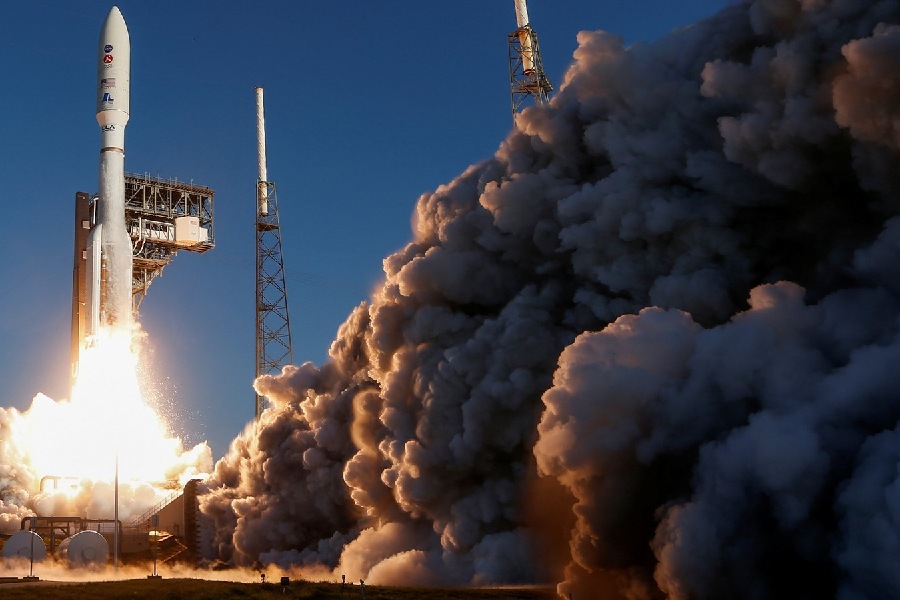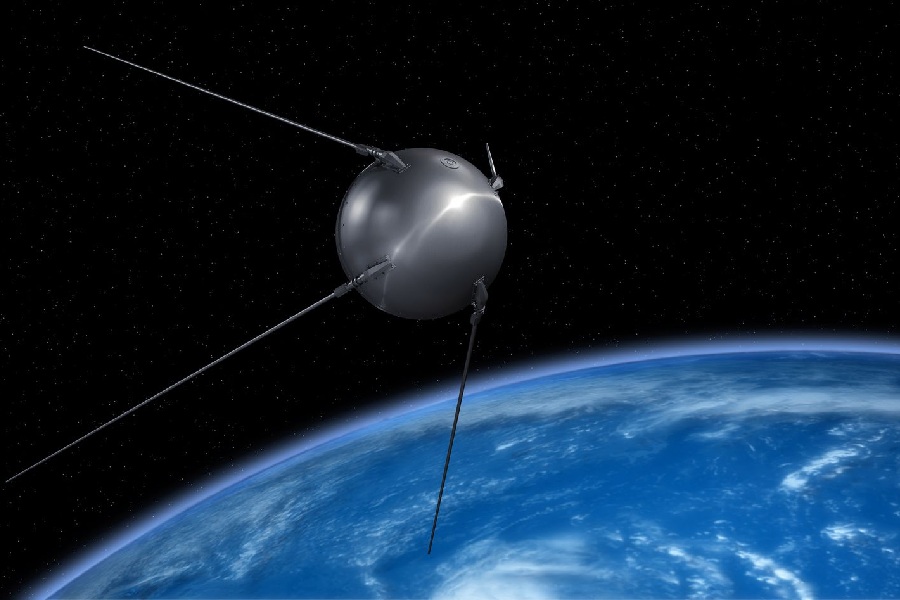The 1960s witnessed an unprecedented competition between the United States and the Soviet Union as they raced to conquer the final frontier – space.
This intense rivalry, known as the Space Race, captured the world’s attention and sparked a series of groundbreaking achievements in space exploration. But what drove these two superpowers to invest so heavily in this cosmic pursuit?
In this article, we will journey into the fascinating history and motivations behind the Space Race, exploring why did the Space Race happen. We’ll examine the political, technological, and ideological factors that fueled this competition and the ways in which it shaped the course of human spaceflight.
From the early days of rocket development to the iconic Apollo missions and beyond, we’ll take you on a journey through the key events and milestones of the Space Race.
Along the way, we’ll discuss how this competition advanced our understanding of the universe. The competition had far-reaching impacts on many facets of life. Get ready to discover the story behind one of history’s most remarkable chapters.

Why Did the Space Race Happen?
So, why did the Space Race happen? The Space Race was a complex and multifaceted competition that was driven by a combination of political, military, and technological factors.
The political motivations of the Cold War, the strategic importance of space exploration, and the rapid pace of technological advancement all contributed to the intensity and urgency of the race to space.
The launch of the first artificial satellite, Sputnik 1, by the Soviet Union in 1957 intensified the competition. The race aimed to demonstrate technological and scientific superiority, enhance national security, and showcase ideological strength.
Precursors to the Space Race
Why did the Space Race start? The Space Race did not emerge out of nowhere. It was the result of a complex interplay of technological advancements and political tensions that developed in the aftermath of World War II. To fully understand the origins of this competition, it is essential to examine the key factors that set the stage for the Space Race.
Post-World War II technological advancements
World War II saw an unprecedented acceleration in scientific and technological progress. Many of these advancements would later prove crucial to the development of space exploration. One of the most significant breakthroughs was the development of rocket technology, which had been used by both the Allies and the Axis powers during the war.
After the war, the United States and the Soviet Union eagerly sought to acquire the knowledge and expertise of German rocket scientists, such as Wernher von Braun.
These scientists had been instrumental in developing the V-2 rocket, the world’s first long-range guided ballistic missile. The V-2 rocket technology would serve as the foundation for future space launch vehicles.
In addition to rocketry, advancements in electronics, communications, and materials science during the war years would also play a vital role in the Space Race.
These technologies enabled the development of sophisticated satellites, spacecraft, and ground support systems that were essential for the exploration of space. What was the purpose of the Space Race?
Emergence of ideological and political tensions
The end of World War II marked the beginning of a new era in international relations. The United States and the Soviet Union emerged as the two dominant superpowers, each with its own distinct political ideology and worldview.
The United States championed capitalism and democracy, while the Soviet Union embraced communism and totalitarianism. As the Cold War began to take shape, the ideological and political tensions between the two superpowers intensified.
Each side sought to demonstrate the superiority of its political and economic system, and space exploration became a crucial arena for this competition. The Space Race was not just about scientific achievement; it was also a battle for international prestige and a way to showcase technological prowess.
Success in space was seen as a symbol of national strength and a validation of each country’s political ideology. This ideological rivalry would fuel the Space Race and drive both nations to achieve remarkable feats in space exploration.
The confluence of post-World War II technological advancements and the emergence of ideological and political tensions set the stage for the Space Race.

Sputnik 1 and the Dawn of the Space Race
The Space Race began in earnest with a single, groundbreaking event – the launch of Sputnik 1 by the Soviet Union. This historic moment not only marked the beginning of the Space Age but also triggered a series of reactions and implications that would shape the course of the Space Race and the world at large.
Launch of Sputnik 1 by the Soviet Union
On October 4, 1957, the Soviet Union successfully launched Sputnik 1, the world’s first artificial satellite. The satellite, a small, spherical device measuring 23 inches (58 centimeters) in diameter, emitted radio signals that could be detected on Earth.
Sputnik 1 orbited the planet for three months, completing over 1,400 orbits before its batteries died. The success of Sputnik 1 was a remarkable achievement for the Soviet Union and a testament to their technological capabilities.
The launch of Sputnik 1 also marked the beginning of the Space Age, a new era in human history characterized by the exploration and utilization of space. The Soviet Union’s achievement with Sputnik 1 caught the United States off guard, as the Americans had been working on their own satellite program, Project Vanguard, but had yet to achieve a successful launch.
The fact that the Soviets had beaten them to this milestone was a significant blow to American pride and prestige. The launch of Sputnik 1 demonstrated that the Soviets had the ability to launch objects into space and maintain their orbit, a feat that had never been accomplished before.
Global reaction and implications
Global awe and anxiety
The launch of Sputnik 1 sent shockwaves around the world. The implications of the Soviet Union’s achievement were far-reaching, extending beyond the realm of space exploration.
The success of Sputnik 1 was seen as a major victory for the Soviet Union in the Cold War, demonstrating their technological superiority and challenging American dominance. In the United States, the launch of Sputnik 1 triggered a wave of anxiety and self-doubt.
Igniting the Space Race
Americans feared that the Soviets had surpassed them in scientific and technological capabilities and worried about the potential military implications of satellite technology. The launch of Sputnik 1 also exposed weaknesses in the American education system, particularly in the fields of science and mathematics.
The global reaction to Sputnik 1 was a mix of awe, fear, and excitement. The idea that humans could launch objects into space and maintain their orbit was a concept that had previously been confined to science fiction. The launch of Sputnik 1 made space exploration a reality and sparked the imagination of people around the world.
The success of Sputnik 1 also had significant implications for the Space Race. It served as a wake-up call for the United States, spurring them to intensify their efforts in space exploration. The Americans realized that they needed to catch up to the Soviets quickly, and the Space Race began in earnest.
Race to the Moon
The Apollo program by the United States
The Apollo program was initiated in 1961 with the goal of landing humans on the Moon. In 1969, Apollo 11 became the first crewed mission to land on the Moon. Neil Armstrong and Buzz Aldrin became the first humans to walk on the lunar surface.
Achieving the Moon landing required overcoming significant technological hurdles in areas like rocketry, spacecraft design, navigation systems, and spacesuit creation.
The Moon landing was watched by over 650 million people and marked a pivotal achievement in space exploration during the 20th century. It demonstrated US technological superiority amidst Cold War tensions. Subsequent Apollo missions continued lunar exploration and experimentation.
Soviet lunar exploration efforts
The Soviet Union pursued an aggressive lunar exploration program known as the Luna program between 1959 and 1976. It consisted of both robotic sample return missions as well as lunar orbit and landing operations.
While the Luna program achieved several firsts like photographing the far side of the Moon and robotic sample returns, it did not accomplish a crewed landing. The US Moon landing was viewed as an American triumph over the Soviets. It likely factored into the Soviets never achieving a crewed landing subsequently.
Legacy of the Space Race
Advancements in space technology
The Space Race between the US and the Soviet Union during the Cold War led to rapid advancements in rocketry, spacecraft and spacesuit design. It drove innovations in navigation systems, life support systems, and materials science.
Many technologies we take for granted today, including satellite TV, GPS systems, and lightweight insulation materials, originated from the research done during the Space Race era. Investments in space technology and exploration continued after Apollo leading to additional progress.
Impact on science and international collaboration
The Space Race drove increased funding for science education and research in both the US and the Soviet Union. It led to advancements in areas as diverse as computing, biology, meteorology, and telecommunications.
Following the lunar landings, the US and Soviet Union moved towards collaborative space efforts. This included the Apollo-Soyuz joint mission, various docking projects and data-sharing agreements. The International Space Station program beginning in 1993, represented the spirit of friendly post-Cold War cooperation in space.
Conclusion
The Space Race between the United States and the Soviet Union during the Cold War represented a competition for technological and ideological supremacy. It also represented a source of inspiration and progress.
The race to the Moon pushed the frontiers of human space exploration and also led to rapid advancements in rocketry, computing, and satellite systems. It also paved the way for increased international collaboration in civil as well as commercial space efforts.
We hope this article has helped explain why did the Space Race happen during the Cold War era and its impact on science and technology.
In summary, for both superpowers, attaining milestones in space became a focal point for their rivalry and quest for influence. This inadvertently fueled rapid innovations beneficial in many other spheres of life. As we stand ready to return humans to the Moon after 50 years, the legacy of the Space Race endures.
